Perfect Princess Read online
A Princess Diaries Book
Illustrated by Chesley McLaren
For princesses everywhere, past, present, and pretend
Thank you to those who contributed to this book, princesses all: Beth Ader, Jennifer Brown, Barbara Cabot, Alison Donalty, Barb Fitzsimmons, Lexa Hillyer, Elise Howard, Sasha Illingworth, Michele Jaffe, Laura Langlie, Abigail McAden, Chesley McLaren, and especially royal consort Benjamin Egnatz, a true prince.
—M.C.
Many thanks to Alison Donalty, Barbara Fitzsimmons, Sasha Illingworth, Abby McAden, Nisha Panchal, and Meg Cabot for all being such perfect princesses!
—C.M.
TABLE OF CONTENTS
Introduction:
All I Need to Know I Learned from Princesses, by Princess Amelia Mignonette Grimaldi Thermopolis Renaldo
Princess Mia discusses the importance of princesses—past, present, and pretend
I.Perfect Princesses:
Dowager Princess Clarisse Renaldo offers a selection of perfect-princess role models
From Chinese Empress Wu Zetian to Britain’s “Queen Mum”: Grandmère admires princesses who have shown grace under pressure
II.Style Princesses:
Hair and makeup guru Paolo and fashionisto Sebastiano discuss principessas whose royal wardrobes have profoundly impacted the world. Also: Cousin Hank Thermopolis makes a special guest appearance
From Marie Antoinette’s rosy cheeks to Princess Jasmine’s halter top, royal style relies on more than just a crown. Paolo and Sebastiano explain how
III.Mrs. Princess:
Tina Hakim Baba names princesses who only became princesses because they were lucky enough to marry princes
Tina examines the phenomenon of commoners who scored royal titles—and princes—from Princess Diana to Mia’s own Grandmère
IV.Power Princesses:
Renowned social activist Lilly Moscovitz comments on princesses who wielded mighty scepters
From Cleopatra and her fatal asp to Elizabeth I, the Virgin Queen, these royals refused to merely sit pretty on their thrones
V.Action Princesses:
Royal Consort Michael Moscovitz reflects upon his ideal princess… and surprisingly, it is not Princess Leia
Michael tells all (or at least his thoughts on heroines in tiaras, that is)
VI.Politically Correct Princesses:
Princess Mia sheds light on the valuable lessons contained in popular fairy tales
From Princess Mononoke to Snow White, every princess carries a message, be it about environmentalism or not eating an apple offered by a stranger, no matter how juicy it looks
VII.Wannabe Princesses:
Princess Mia decrees just who is, and who is not, a real princess
In regards to the likes of Barbie, Smurfette, and Gwyneth Paltrow, Princess Mia draws a line in the sand
VIII.Should-Be Princesses:
Princess Mia lists those who are not princesses but ought to be
Princess Mia takes a stand on behalf of Buffy the Vampire Slayer, Gwen Stefani, and others
Conclusion :
Getting in touch with your inner princess
Princess Mia ties it all together
About the Author and the Illustrator
Other Books by Princess Mia
Copyright
About the Publisher
INTRODUCTION
by Her Royal Highness Princess Mia Thermopolis
Imagine it: One day you’re just this normal ninth grader with too-big feet and too-small breasts, whose biggest concern is passing Algebra and/or whether or not your best friend’s hottie brother knows you’re alive. The next thing you know, you’re a princess. Suddenly, everybody around you is talking tiaras and tariffs. But you’re still all, “What’s on the WB tonight?”
Like adolescence isn’t bad enough, with the zits and the bad hair days and the nobody-understands-me thing. Try taking all that and throwing a big ermine cape over it (except not, because wearing fur is wrong unless you are, like, an
Eskimo and really need mink to stay alive in the subarctic temperatures or whatever).
Fortunately my grandmother—formally known as the Dowager Princess Clarisse Renaldo, or, as I simply call her, Grandmère—stepped in with the whole “princess lessons” idea. True, my chance of ever taking part in after-school extracurriculars is totally shot, on account of how I have to go to Grandmère’s every afternoon to learn how to pour tea and say, “I don’t prefer any more finger sandwiches, thank you,” in seven different languages.
But while I’m still not exactly sure about the whole posture thing and how much of a tip to leave the hotel manicurist in Beijing, one thing I have got down is the fact that I am not the world’s first—or even its last—princess.
And just knowing that I’m not alone—that there are people who have endured exactly what I’m going through— is, like, such a major comfort, I can’t even tell you. Read on to find out about other princesses—past, present, and pretend—who have made major impacts on society, and what we, as princesses in training, can learn from their triumphs and mistakes.
I.
A Note from
Her Royal Highness Princess Mia
Grandmère says the only way we as a society can learn from our mistakes is carefully to scrutinize them, and vow never to repeat them. I guess this would explain why I’m stuck in princess lessons with her every single weekday from four to six.
Not surprisingly, Grandmère thinks SHE’s the most suitable person to consult about royal role models. She says in her day, young women did not look up to scantily clad, weapon-wielding princesses such as Xena and “that other one, the one with the robots and the buns on the sides of her head” (!!!!!!) but to royals such as Princess Margaret and Isabel of Spain.
And though Grandmère says that there are any number of highly memorable princesses she would recommend that I emulate, she always adds, “Though I feel I can say—without flattering myself, which would be highly unprincesslike— that I’m probably your most suitable role model.”
Whatever! I suppose it is setting a good example to smoke a pack a day and swill down about a zillion Sidecars before breakfast.
On the other hand, it’s true you hardly ever read about Grandmère in the National Enquirer. She is the epitome of discretion. At least, outside the confines of the palace. Inside, all bets are off.
ELIZABETH,
THE LATE QUEEN MOTHER
by Grandmère, Dowager Princess of Genovia, grandmother to Mia Thermopolis
[with commentary by Princess Mia]
The late queen mother of Great Britain—often vulgarly referred to as the “Queen Mum”—is a perfect example of a princess who comported herself with grace and dignity throughout her long life. The mother of the longest-ruling sovereign in British history, one of Queen “Bess’s” most notable contributions to the throne was her insistence that her family stay together during World War II. Rather than shipping her two young daughters, the Princesses Elizabeth and Margaret, to safety in the countryside, as many London parents were doing, the queen kept the girls at her side in the palace… a palace that was frequently strafed by Luftwaffe gunfire and even, on several occasions, bombed by the Nazi horde.
Her Majesty refused to be daunted by this senseless onslaught, and bravely visited her less fortunate subjects, commoners whose own homes had been blown to smithereens, in the very craters in which their beds once stood, offering tips as to how the damage might be repaired while never getting so much as a smudge on her crisp cotton gloves. Indomitable and cheerful throughout her husband’s reign, the queen mother is a perfect example of a regent who showed grace under pressure… and always while wearing a delightful confection of a
chapeau.
[Um. Okay. The part about not fearing the Nazis is cool.]
Grandmère’s Random Act of Princess:
Be like the queen mother: Brighten the day of someone less fortunate than yourself by going to visit him or her while wearing a pair of white gloves and a charming hat with an adorable matching clutch. The poor soul will be cheered by the effort you will have made to look your best.
ENGLAND’S PRINCESSES
ELIZABETH AND MARGARET
Like their mother, the young Windsor princesses showed remarkable character during their teen years, despite living under constant threat of being murdered in their beds by an invading Nazi scourge. The brave princesses cheerfully assisted their mother in rolling bandages for the Royal Air Force, and wore cunning little khaki Wren uniforms, just like all the other British girls who chose to volunteer to stop the tyrannical oppression of the Axis powers by running canteens and casino nights for war-weary British soldiers. Through it all they had to endure not only the knowledge that they might at any moment be blown to kingdom come, but also rationing, as things like sugar and—perish the thought!—silk stockings were scarce and had to be saved for the war effort.
Perhaps most horrifying of all, during the height of the war, the princesses were forced to bathe in a maximum of only four inches of tepid water, and only once daily. I have it on certain authority that their mother put tape inside the tub to indicate the level the water was not to exceed. Such privations are doubtless why the two princesses grew into such responsible and respectable women, well capable of bearing the aristocratic mantle thrust upon them so early in life.
[That’s nothing. During water shortages in the summer time here in NYC, the mayor’s office issues directives about how often you are supposed to flush the toilet. Having to endure something like that is what I call character building. In fact, I might even be scarred for life.]
Mia’s Random Act of Princess:
Be like Princesses Elizabeth and Margaret: Grow a Victory garden! You don’t need a yard to do it, either. Plant basil and parsley seeds in cups of soil and place them on your windowsill. Snip off leaves when they are grown to add to salads, pasta dishes, even pizzas! This way, if an invading force ever enters YOUR city and supply lines to your local grocery store are cut off, you’ll still have the ability to make tasty treats for your friends.
ALICE, PRINCESS ANDREW OF GREECE
Perhaps best known as the mother of Prince Philip, the royal consort of Queen Elizabeth II of England, Alice was a dear friend who ministered to the sick in Greek hospitals and soup kitchens, and who sheltered a Jewish family during the Holocaust (for which she was posthumously given the title Righteous among the Nations, an honor Oskar Schindler also received). A gracious lady and superlative hostess, Alice was everything one would expect in someone with the title Her Royal Highness.
[Whatever! My dad gave me the real scoop on Princess Alice: When Czar Nicholas II of Russia got a little too carried away, pelting Alice with rice at her 1903 wedding to Prince Andrew, she got him to cut it out by grabbing a shoe and whacking him on the head with it a few times. Way to go, Alice!]
Mia’s Random Act of Princess:
Be like Alice: Install a dartboard on the back of your bedroom door. During your spare moments from homework and good works among the poor, practice your hand-eye coordination. You never know when good aim might come in handy.
WU ZETIAN
For nearly a century during the Tang Dynasty, though hardly anyone seems to know it, a woman was emperor of China. Her name was Wu Zetian, and she rose well above her birth rank, which was that of a lowly peasant, by becoming a princess upon marrying the emperor’s son. After her husband, who soon inherited the throne, suffered a stroke, Princess Wu stepped in and assumed the administrative duties of governance, eventually being named empress.
By all reports Empress Wu was a benevolent and kind ruler, doing much to elevate the status of women in Chinese society— particularly women belonging to her own family. Empress Wu also siphoned money away from the military and spent it on education reform, and she lowered taxes, an act that rarely makes a regent unpopular with her people.
[In Genovia, there are no taxes. That’s because the amount of money the tourists lose gambling in Genovian casinos every year exceeds the gross national debt by several hundred million. Gambling can be very addictive, you know, which is why, when I take over the throne, I intend to offer Gamblers Anonymous meetings right in the palace. Only don’t tell Grandmère.]
Mia’s Random Act of Princess:
Be like Wu: Join your student council. Vote for more spending on arts and sciences than on athletics, except for the girls’ teams. When male student council members accuse you of being partisan, say, “What’s your point?”
ANASTASIA
The youngest daughter of Czar Nicholas II, Anastasia was a lively and pretty girl, who lived happily with her parents and older sisters and younger brother… until tragedy struck, that is. Tragedy came to the Romanovs in the form of Rasputin, a so-called holy man who appeared to “cure” Anastasia’s little brother of hemophilia, an incurable disorder. The Russian people were a little more skeptical of Rasputin’s claims, and the royal family’s faith in him shook the Russian people’s faith in the Romanovs. Soon, revolution occurred, and the Romanovs were cruelly set upon and shot in cold blood—although it took longer to kill Anastasia and her sisters, because they had sewn the family jewels into their corsets, and the bullets kept bouncing off them.
Which should be a lesson to us all: Never listen to the advice of charlatans.
[Also, it is probably a bad idea to wear bras made out of diamonds.]
The bodies of Anastasia and her brother, incidentally, were never found, leading many to believe that the youngest Romanov daughter might still be alive today.
[If Anastasia is still alive, can I just say, RUN! Get out now while the going is good! Don’t let them find you and force YOU to take princess lessons every day, like me! Save yourself!]
Mia’s Random Act of Princess:
Be like Anastasia: Be kind to your younger siblings. Take them to the park or to a movie. You never know whether you might need to use one of them as a human shield in the event of an assassination attempt.
ALETA, QUEEN OF THE MISTY ISLES
Amelia insists that I include a fictional princess or two in addition to the “real life” ones I’ve mentioned. While I find it quite ludicrous to suggest that there are important tips on asserting one’s royalness to be learned from a fictional character, I will admit that, for every Sunday for almost as long as I can remember, I have been mildly impressed by the regal dignity with which the wife of Prince Valiant, the chivalrous gallant of the comics pages, comports herself.
And it certainly cannot have been easy, attempting to live like a noblewoman in an era during which there were no foundation garments or even mirrors. In addition to which, Aleta seems to have a marked preference for togas… very unflattering to all but the most statuesque of women.
However, it must be admitted that Valeta and Karen, Valiant and Aleta’s twin daughters, have also proved courageous, if somewhat romantically challenged, princesses. Except for a few lapses during which one or the other of these girls has traipsed off after their father or brother, disguised as a boy with sword in hand, they have shown a good sense that many “real life” princesses today are markedly lacking. In all, I find that the Queen of the Misty Isles and her daughters make for fine, if fictional, examples of royal grace.
[The girl who played Aleta in the Prince Valiant movie was the same girl who played Isabel on Roswell. Also, Aleta and Valiant’s son, Prince Arn, is married to a totally cool princess, Maeve, the daughter of King Arthur’s creepy son, Prince Mordred. But Maeve can’t help who her father is— and at least Mordred is better than Darth Vader. Anyway, Maeve is a dog whisperer, just like that guy Robert Redford played in that movie, only with dogs, not horses. Personally, I believe I am a cat whisperer, since Fat Lou
ie will do almost anything I say. Except, you know, get me a soda from the kitchen when I’m busy at the computer. But that’s just because he doesn’t have opposable thumbs.]
Grandmère’s Random Act of Princess:
Be like Aleta: Don’t dismiss the awkward, “geeky” boys in your class. It’s entirely possible that one of them might discover he is actually a long-lost prince whose parents were forced to give him up for his own protection… just like Valiant!
THE PRINCESS AND THE PEA
While many mock the story of the Princess and the Pea for portraying a heroine who is so absurdly sensitive that she can feel something as small as a pea through a twenty-foot pile of mattresses, I do feel it ought to be pointed out that by pea, the narrators of this tale are not referring to the soggy things you and I frequently find upon our plates in restaurants. Indeed not! Such a pea would of course be crushed beneath the weight of all those mattresses, and rendered undetectable to anyone, even a princess.
The narrators in this case mean an uncooked, dry pea. Of course only the most sensitive of us would be able to feel such a pea beneath so much padding. But feel it we would. Because princesses, besides being used to the finer things in life, are extremely sensitive creatures… incredibly giving and uncomplaining, but still very, very sensitive. You will note that the princess in the story of the princess and the pea was quite reluctant to share with the queen the truth about her restless night…. She did not want her hostessto feel badly, after having offered such kind hospitality.

 Bridal Boot Camp
Bridal Boot Camp Party Princess
Party Princess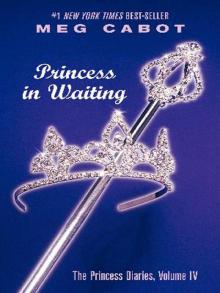 Princess in Waiting
Princess in Waiting Being Nikki
Being Nikki Abandon
Abandon Princess on the Brink
Princess on the Brink Darkest Hour
Darkest Hour Reunion
Reunion Princess in Pink
Princess in Pink Sweet Sixteen Princess
Sweet Sixteen Princess The Princess Diaries
The Princess Diaries Airhead
Airhead Princess in the Spotlight
Princess in the Spotlight No Judgments
No Judgments All-American Girl
All-American Girl Princess in Love
Princess in Love Forever Princess
Forever Princess Haunted
Haunted Shadowland
Shadowland Twilight
Twilight Princess Mia
Princess Mia Proposal
Proposal Remembrance
Remembrance Ransom My Heart
Ransom My Heart Underworld
Underworld Shadowland tm-1
Shadowland tm-1 Size 14 Is Not Fat Either
Size 14 Is Not Fat Either Darkest Hour tm-4
Darkest Hour tm-4 Airhead a-1
Airhead a-1 Royal Crush
Royal Crush The Princess Present (princess diaries)
The Princess Present (princess diaries) Royal Crown
Royal Crown Royal Wedding: A Princess Diaries Novel (The Princess Diaries Book 11)
Royal Wedding: A Princess Diaries Novel (The Princess Diaries Book 11) Princess Diaries, Vol. X: Forever Princess
Princess Diaries, Vol. X: Forever Princess Royal Wedding Disaster
Royal Wedding Disaster Allie Finkle's Rules for Girls: Glitter Girls and the Great Fake Out
Allie Finkle's Rules for Girls: Glitter Girls and the Great Fake Out Size 12 Is Not Fat hwm-1
Size 12 Is Not Fat hwm-1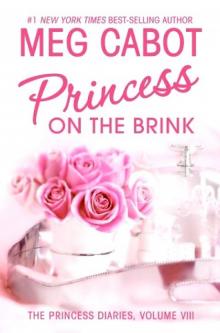 Princess on the Brink pd-8
Princess on the Brink pd-8 The New Girl
The New Girl Allie Finkle's Rules for Girls: Moving Day
Allie Finkle's Rules for Girls: Moving Day Code Name Cassandra
Code Name Cassandra Mia Goes Fourth pd-4
Mia Goes Fourth pd-4 Sanctuary 1-4
Sanctuary 1-4 Missing You 1-5
Missing You 1-5 The Mediator 6: Twilight
The Mediator 6: Twilight Allie Finkle's Rules for Girls: Best Friends and Drama Queens
Allie Finkle's Rules for Girls: Best Friends and Drama Queens The Boy Next Door
The Boy Next Door Every Boy's Got One
Every Boy's Got One Princess Mia pd-9
Princess Mia pd-9 Haunted tm-5
Haunted tm-5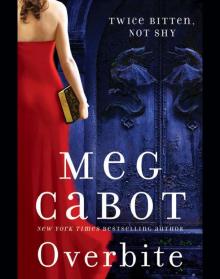 Overbite
Overbite Princess Lessons
Princess Lessons She Went All the Way
She Went All the Way Give Me Five pd-5
Give Me Five pd-5 Twilight tm-6
Twilight tm-6 Jinx
Jinx Runaway (Airhead #3)
Runaway (Airhead #3) Queen of Babble Gets Hitched qob-3
Queen of Babble Gets Hitched qob-3 Forever Princess pd-10
Forever Princess pd-10 Queen of Babble
Queen of Babble Boy Meets Girl b-3
Boy Meets Girl b-3 Pants on Fire
Pants on Fire Big Boned ху-3
Big Boned ху-3 Princess' Diaries pd-1
Princess' Diaries pd-1 Size 14 Is Not Fat Either hwm-2
Size 14 Is Not Fat Either hwm-2 Awaken a-3
Awaken a-3 Queen Of Babble: In The Big City qob-2
Queen Of Babble: In The Big City qob-2 Nicola and the Viscount
Nicola and the Viscount Allie Finkle's Rules for Girls: Stage Fright
Allie Finkle's Rules for Girls: Stage Fright Size 12 and Ready to Rock
Size 12 and Ready to Rock Perfect Princess
Perfect Princess The Bride Wore Size 12
The Bride Wore Size 12 1-800-Where-R-You: Missing You
1-800-Where-R-You: Missing You How to Be Popular
How to Be Popular Queen of Babble Bundle with Bonus Material
Queen of Babble Bundle with Bonus Material Allie Finkle's Rules for Girls: Blast from the Past
Allie Finkle's Rules for Girls: Blast from the Past Princess in the Spotlight pd-2
Princess in the Spotlight pd-2 Ready or Not
Ready or Not The Princess Diaries I
The Princess Diaries I Party Princess pd-7
Party Princess pd-7 Third Time Lucky pd-3
Third Time Lucky pd-3 Stage Fright
Stage Fright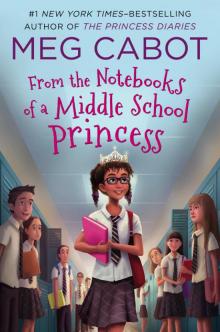 From the Notebooks of a Middle School Princess
From the Notebooks of a Middle School Princess Notebooks of a Middle-School Princess Bridesmaid-in-Training
Notebooks of a Middle-School Princess Bridesmaid-in-Training Boy Meets Girl
Boy Meets Girl Missing You
Missing You The Twilight
The Twilight Size 12 Is Not Fat
Size 12 Is Not Fat Code Name Cassandra 1-2
Code Name Cassandra 1-2 Valentine Princess
Valentine Princess Project Princess
Project Princess Reunion tm-3
Reunion tm-3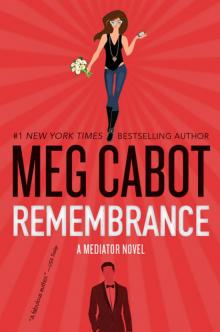 Remembrance: A Mediator Novel
Remembrance: A Mediator Novel When Lightning Strikes 1-1
When Lightning Strikes 1-1 Safe House 1-3
Safe House 1-3 Teen Idol
Teen Idol Queen of Babble Gets Hitched
Queen of Babble Gets Hitched Glitter Girls and the Great Fake Out
Glitter Girls and the Great Fake Out Moving Day
Moving Day Insatiable
Insatiable All American Girl
All American Girl The Boy Is Back + Every Boy's Got One Bundle
The Boy Is Back + Every Boy's Got One Bundle Big Boned
Big Boned Awaken
Awaken Princess in Training pd-6
Princess in Training pd-6